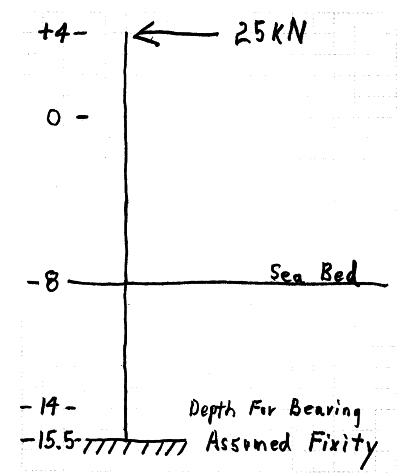KkEngineer
Structural
Dear all,
I have an instance in a pile design where the vertical load is very low such that the point of fixity (which is primarily governed by the diameter of the pile, calculated as per Tomlinson) is deeper than what is required by bearing capacity check. I need a minimum pile diameter in order to practically support the platform above it.
My question is how do i determine where to stop driving my pile in such a case. There should be a practical depth below the point of fixity in order to achieve that point of fixity right?
Ex.
Pile load: 190 kN approx. (SLS)
Pile dia approx. 900 mm
Sea bed level: -8 m
Top of pile: +4 m
Depth of point of fixity below sea bed: 7.5 m
Pile depth required as per bearing capacity check: 6 m below sea bed.
Thanks
VK
I have an instance in a pile design where the vertical load is very low such that the point of fixity (which is primarily governed by the diameter of the pile, calculated as per Tomlinson) is deeper than what is required by bearing capacity check. I need a minimum pile diameter in order to practically support the platform above it.
My question is how do i determine where to stop driving my pile in such a case. There should be a practical depth below the point of fixity in order to achieve that point of fixity right?
Ex.
Pile load: 190 kN approx. (SLS)
Pile dia approx. 900 mm
Sea bed level: -8 m
Top of pile: +4 m
Depth of point of fixity below sea bed: 7.5 m
Pile depth required as per bearing capacity check: 6 m below sea bed.
Thanks
VK


![[idea] [idea] [idea]](/data/assets/smilies/idea.gif)
![[r2d2] [r2d2] [r2d2]](/data/assets/smilies/r2d2.gif)